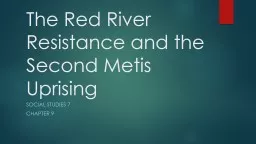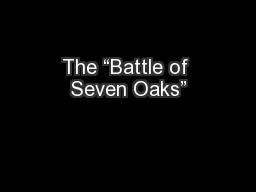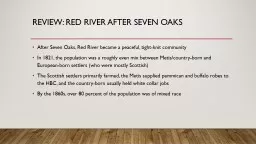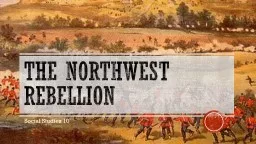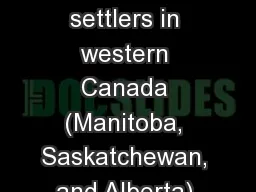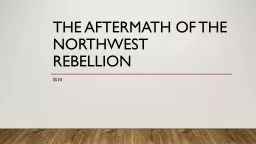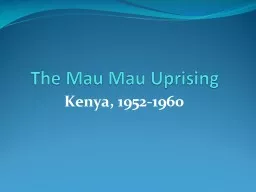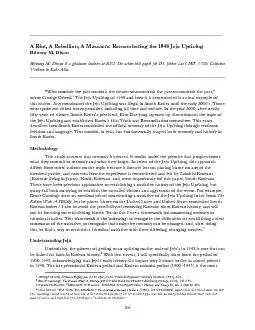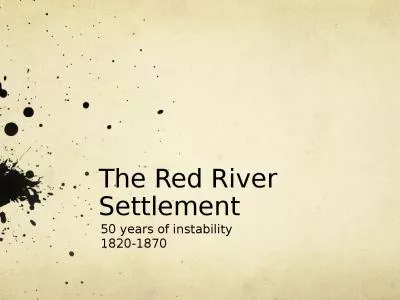PPT-The Red River Resistance and the Second Metis Uprising
Author : olivia-moreira | Published Date : 2017-11-10
Social Studies 7 Chapter 9 The Red River Resistance Red River was located within Ruperts Land Francophone Métis Anglophone Metis Canadiens retired HBC employees
Presentation Embed Code
Download Presentation
Download Presentation The PPT/PDF document "The Red River Resistance and the Second ..." is the property of its rightful owner. Permission is granted to download and print the materials on this website for personal, non-commercial use only, and to display it on your personal computer provided you do not modify the materials and that you retain all copyright notices contained in the materials. By downloading content from our website, you accept the terms of this agreement.
The Red River Resistance and the Second Metis Uprising: Transcript
Download Rules Of Document
"The Red River Resistance and the Second Metis Uprising"The content belongs to its owner. You may download and print it for personal use, without modification, and keep all copyright notices. By downloading, you agree to these terms.
Related Documents

